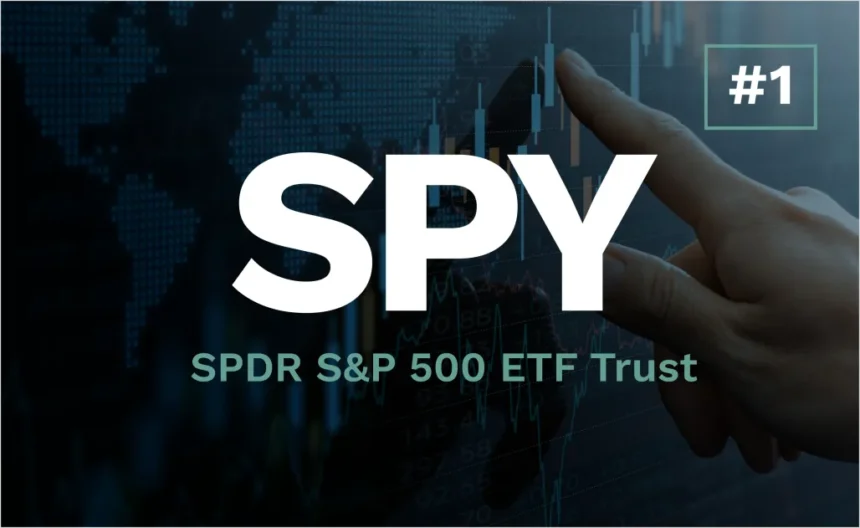Since its inception in 1993, the SPDR S&P 500 ETF Trust, commonly referred to by its ticker symbol SPY, has held a legendary status as the king of U.S. exchange-traded funds (ETFs). For more than three decades, it has dominated not only in assets under management but also in trading volume and market influence. However, in a rapidly evolving ETF landscape crowded with competitors like Vanguard’s VOO and BlackRock’s IVV, many investors ask: Is SPY still the clear leader, or has it started losing its crown? This article delves into SPY market performance in 2025, comparing it to rivals, and evaluates if it remains the top choice for investors and traders.
The Historical Dominance of SPY
SPY was the first ETF launched in the United States, designed to track the S&P 500 index which represents the 500 largest publicly traded U.S. companies. This first-mover advantage gave SPY significant early recognition and investor trust, which has contributed to its enormous liquidity and trading depth over the years.
As of late 2024, SPY surpassed $600 billion in assets under management, making it the largest ETF globally. Its sheer size is reflected in daily trading volumes, frequently exceeding 70 million shares, which is unmatched by any ETF competitor. This liquidity ensures tight bid-ask spreads, minimizing trading costs which appeals to both retail and institutional investors alike.
Comparing SPY with Vanguard’s VOO and BlackRock’s IVV
Despite SPY’s historic dominance, competitors have steadily gained traction. Vanguard’s VOO overtook SPY as the world’s largest ETF in early 2025, with assets nearing $632 billion. VOO poses a significant challenge due to its slightly lower expense ratio—around 0.03%, compared to SPY’s 0.0945%, making it an attractive option for cost-conscious investors.
Similarly, BlackRock’s IVV has gained considerable market share, with inflows increasing steadily. Both VOO and IVV offer nearly identical exposure to the S&P 500, but SPY retains advantages in liquidity and the ecosystem of derivatives built upon it, including options and SPY futures.
SPY Futures: Enhancing SPY’s Market Leadership
A critical factor supporting SPY’s continued leadership is its central role in the derivatives market. SPY futures, traded on the Chicago Mercantile Exchange (CME), provide traders with nearly 24-hour access to S&P 500 exposure, allowing hedging and speculative strategies unavailable directly through ETF shares.
This futures market support enhances SPY’s trading volume and liquidity because institutional players rely heavily on these derivatives for risk management and arbitrage. The result is a feedback loop where high liquidity in futures sustains tight spreads and active trading in SPY ETF shares, reinforcing its position.
SPY Stock Price and Market Performance in 2025
The SPY stock price has shown resilience in 2025 despite global economic challenges. Currently priced around the high $680 range, it reflects steady investor confidence in U.S. economic fundamentals and corporate earnings growth. Over the past year, the SPY NAV (net asset value) returned close to 18%, outperforming many actively managed funds.
SPY’s market price closely tracks the S&P 500 index, with any significant shifts debated and absorbed quickly by market participants. Its price movements are a bellwether for broader U.S. equity conditions, making SPY stock price one of the most scrutinized indicators by traders, portfolio managers, and economic analysts.
Why Investors Still Prefer SPY
-
Liquidity and Tight Spreads: SPY’s liquidity remains unmatched, making it ideal for high-frequency traders and large institutional orders.
-
Established Ecosystem: The availability of SPY options and futures provides diverse strategic tools for risk and return management.
-
Historical Trust and Brand Recognition: Being the original ETF gives SPY credibility built over decades.
-
Broad Market Representation: SPY offers instant exposure to the entire large-cap U.S. equity market, ideal for core portfolio holdings.
Challenges Facing SPY
SPY higher expense ratio compared to rivals is the most significant challenge. As investors become increasingly fee-conscious, funds like VOO with ultra-low costs attract growing inflows. Moreover, some ETF platforms bundle newer thematic or smart-beta ETFs that appeal to niche investors, potentially diluting SPY’s share of total ETF investments.
Read More: SPY Price Forecast: What Investors Can Expect in the Coming Years
Conclusion: The King’s Throne Holds—For Now
Although competitors like Vanguard’s VOO are eroding some of SPY’s asset dominance, SPY remains the preeminent ETF in terms of trading volume, liquidity, and derivative market integration. Its stock price performance and reputation continue to make it the go-to fund for millions of investors worldwide.
SPY’s dominance is unlikely to be dethroned quickly given its ecosystem’s complexity around SPY futures and options. For many market participants, SPY offers unparalleled flexibility and reliability despite marginally higher costs.









